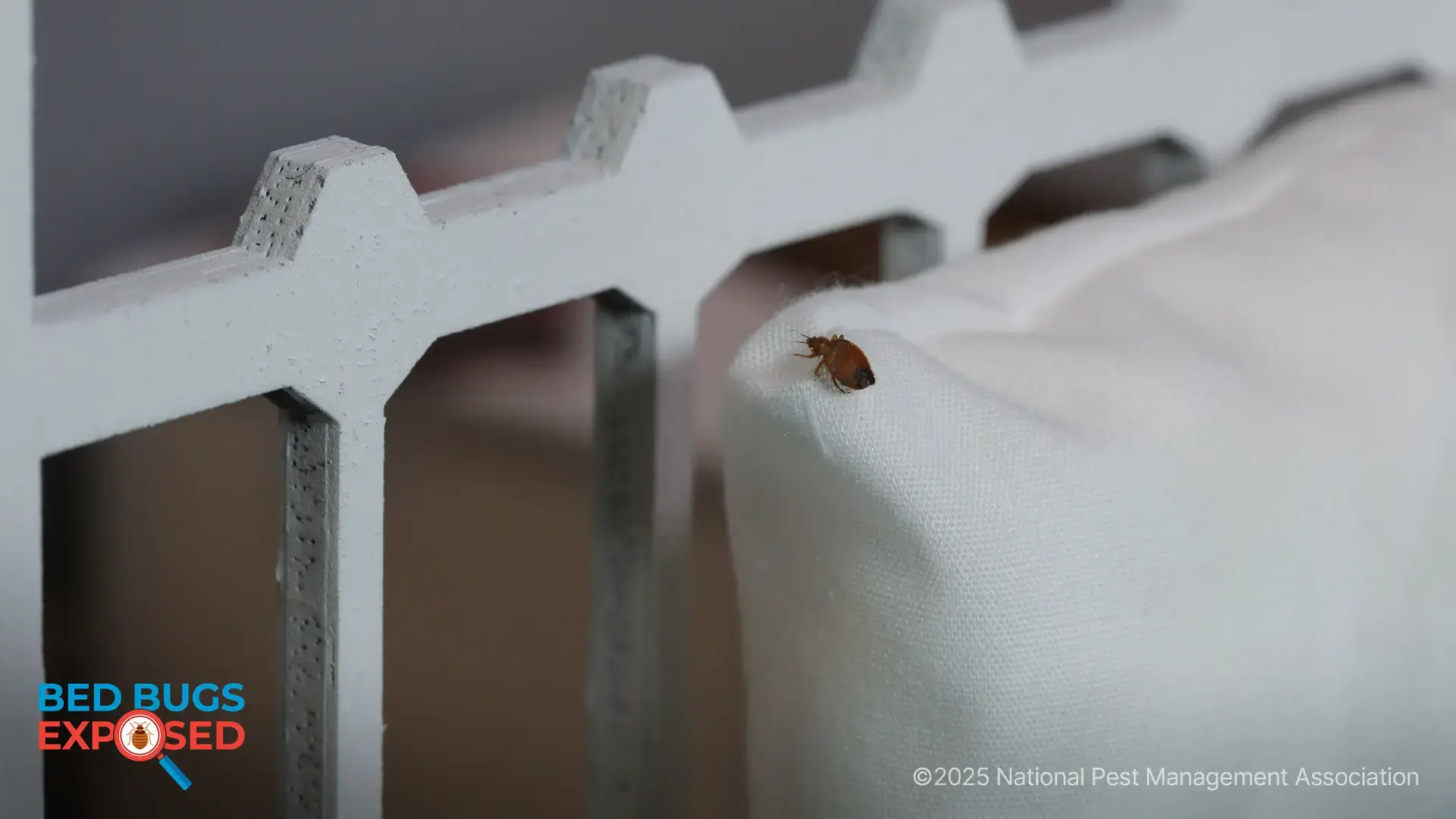Stink Bugs in Fall and Winter: U.S. States Most Affected in 2025-2026
As fall settles over the Great Lakes, Ohio Valley, and Midwest, residents may notice an unwelcome seasonal visitor, the brown marmorated stink bug. According to the National Pest Management Association’s (NPMA) Fall 2025 Bug Barometer®, unseasonably warm and dry conditions this year could allow these invasive pests to survive longer outdoors before seeking refuge inside homes and businesses.
Why You See More Stink Bugs in Cooler Weather
The brown marmorated stink bug (Halyomorpha halys), native to Asia, has become a widespread nuisance across much of the United States. Unlike other pests that invade homes in search of food, stink bugs move indoors primarily to overwinter.
After a warmer and drier fall in certain regions, these pests begin seeking shelter as temperatures start to drop. Stink bugs are attracted to warmth, light, and hidden spaces, prompting them to gather inside attics, wall voids, basements, and behind siding.
"Fall is prime time for stink bug invasions," said Dr. Jim Fredericks, Senior Vice President of Public Affairs for the National Pest Management Association (NPMA). "This is the season when they sneak indoors for shelter, and our homes seem like great places to hunker down. What makes stink bugs particularly challenging is that they often arrive in large numbers, and true to their name, they release a foul odor when disturbed or crushed."
U.S. States Where Stink Bug Increases May Be Highest in 2025-2026
The NPMA notes that states in the Great Lakes, Ohio Valley, and Midwest are likely to experience increased stink bug encounters this fall. This includes:
- West Virginia
- Ohio
- Kentucky
- Indiana
- Michigan
- Wisconsin
- Illinois
- Iowa
- Missouri
- Minnesota
As temperatures begin to dip, these pests may invade homes in greater numbers than usual.
How to Keep Stink Bugs Out
Preventing stink bugs from getting in your house starts with exclusion and vigilance. Preventing a stink bug invasion begins with proactive maintenance both inside and outside the home. The National Pest Managemetn Association recommends these practical steps to reduce your chances of hosting these smelly invaders:
- Seal off entry points: Inspect the exterior of your home carefully, focusing on cracks and gaps around siding, windows, doors, utility pipes, chimneys, and fascia boards. Use a high-quality silicone or silicone-latex caulk to seal any openings.
- Repair or replace damaged materials: Check window screens, weather-stripping, and door sweeps for wear. Replace torn screens and secure loose mortar around windows and foundations to block entry.
- Reduce outdoor lighting: Stink bugs are drawn to light. Turn off outdoor lights when not needed and close blinds or curtains at night to minimize indoor light leakage. Consider switching to yellow “bug” bulbs, which are less attractive to insects.
- Eliminate excess moisture: Check for leaky pipes, clogged gutters, or areas of standing water around your home. Reducing moisture not only discourages stink bugs but also helps prevent other pest infestations.
- Remove food sources: Store food in airtight containers and keep your kitchen clean by wiping down counters and sweeping up crumbs. Empty indoor trash regularly and use sealed receptacles.
- Ventilate properly: Keep attics, basements, crawl spaces, and garages dry and well-ventilated. Use dehumidifiers where needed, and install screens over chimney and attic vents to prevent entry.
- Inspect belongings before bringing them inside: Carefully check boxes, grocery bags, plants, and holiday decorations before bringing them indoors, as stink bugs can hitchhike inside unnoticed.
- Maintain your landscaping: Trim vegetation away from your home’s exterior and store firewood at least 20 feet away from the structure and five inches off the ground. This limits harborage areas near the foundation.
- Avoid crushing them: Resist the urge to squish stink bugs. Doing so releases their signature odor. Instead, gently collect and remove them.
- Use a vacuum for removal: If stink bugs do get inside, use a vacuum cleaner to capture them. Dispose of the vacuum bag immediately to prevent lingering odors.
Contact a Stink Bug Control Professional
If infestations persist, contact a licensed pest management professional for treatment options that target both entry points and overwintering sites. Acting now to pest-proof your home can help ensure you don’t share your winter with these odorous intruders.

Learn About Rodents
Rodents invade millions of homes each winter. Learn more about them!

NPMA's Bug Barometer Forecast
The latest Bug Barometer® forecast from the National Pest Management Association reveals what homeowners across America can expect from pest activity this fall and winter.

NPMA's Bed Bugs Exposed Project
Check out NPMA's Bed Bugs Exposed project to learn more about this hitchhiking pest and how to prevent an infestation at home.
Find a PEST PRO in your area

Learn About Rodents
Rodents invade millions of homes each winter. Learn more about them!

NPMA's Bug Barometer Forecast
The latest Bug Barometer® forecast from the National Pest Management Association reveals what homeowners across America can expect from pest activity this fall and winter.

NPMA's Bed Bugs Exposed Project
Check out NPMA's Bed Bugs Exposed project to learn more about this hitchhiking pest and how to prevent an infestation at home.
